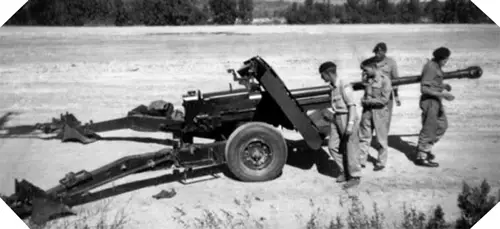Ordnance QF 17 Pounder
History, technical sheet and photo

Ordnance QF 17 Pounder history
British tanks are considered inferior to German tanks, hence the British command’s desire to improve and strengthen its anti-tank artillery.
The first prototypes of the 17-pounder anti-tank gun respond to a very urgent need of the British who see the appearance of Tiger I tanks in North Africa: these pieces of artillery (nicknamed Pheasant) are immediately sent to the front, even before (Punder system is then reused for the 17 Pounder) and they know their baptism of fire in February 1943.
The large scale production of the 17 Pounder begins the same year: it turns out to be a particularly powerful gun, much more powerful than other allied parts. So he teamed up with tanks like the Sherman Firefly or the M10 Achilles.
During the Battle of Normandy, it was deployed in the very first hours of Operation Overlord, being transported by glider Hamilcar for the benefit of the British airborne troops, in order to prevent the success of a possible armored counter-attack. In the field, it can be towed by the British tracked Crusader Gun Tractor for this purpose.
The 17 Pounder is also in service with the Australian Army and participates after the Second World War in the Korean War where he participates in the destruction of enemy bunkers. It is then replaced by the QF 20 Pounder.
Ordnance QF 17 Pounder specification
Creator/User: Commonwealth
Denomination: Ordnance QF 17 Pounder
Caliber: 76,2 mm
Shell weight: 2,9 kg
Effective firing range: 900 m
Maximum firing range: 4,600 m
Elevation: from -6° to +16,5°
Traverse: 60°
Total weight: 3,000 kg
